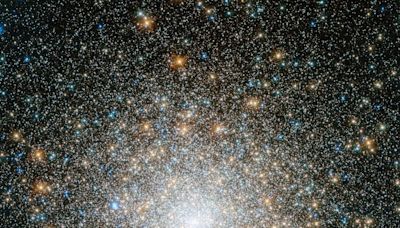Search results
1 day ago · Cosmic dawn is the time encompassing the first billion years of the universe. Roughly 400 million years after the Big Bang, the Epoch of Reionization began, ...
Sep 15, 2021 · According to a new study from the Université de Genève, Switzerland, the ability to see the Cosmic Dawn will provide answers to today's greatest cosmological mysteries.
Jun 24, 2021 · Cosmic dawn, when stars formed for the first time, occurred 250 million to 350 million years after the beginning of the universe, according to a new study led by researchers at UC Santa Cruz, the University College London, and the University of Cambridge.
- Links
- Image
- Video
Credit: ESA/Hubble, NASA, HST Frontier Fields. A colour image of the galaxy cluster used to detect one of the six galaxies, MACS0416-JD. This galaxy has an estimated age of 351 million years, which...
Credit: Dr Harley Katz, Beecroft Fellow, Department of Physics, University of Oxford. The video shows the formation and evolution of the first stars and galaxies in a virtual universe similar to ou...
May 27, 2024 · Scientists have just identified the formation processes of some of the Universe's earliest galaxies in the turbulent era of the Cosmic Dawn. JWST observations of the early Universe around 13.3 to 13.4 billion years ago – just a few hundred million years after the Big Bang – have revealed telltale signs of gas reservoirs being actively ...
Jun 24, 2021 · Astronomers have worked out when the first stars began shining. They say that this period, known as the "cosmic dawn," occurred between 250 to 350 million years after the Big Bang. The results...
People also ask
When did Cosmic Dawn occur?
Could seeing the Cosmic Dawn help solve cosmological mysteries?
Did galaxies form in the Cosmic Dawn?
Will astronomers find luminous galaxies at Cosmic Dawn?
How did JWST detect the Cosmic Dawn?
Can the Hubble Space Telescope witness Cosmic Dawn?
3 days ago · Piping Up at the Gates of Dawn Astronomers have found the earliest and most distant galaxy yet. The newly discovered galaxy, known as JADES-GS-z14-0, emanates light that is 13.5 billion years old.



